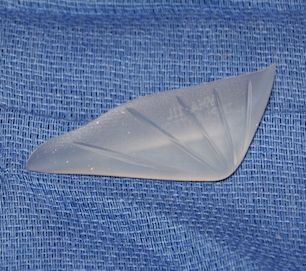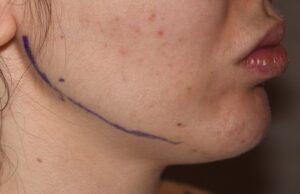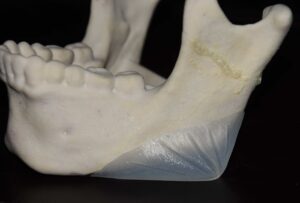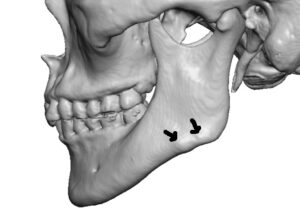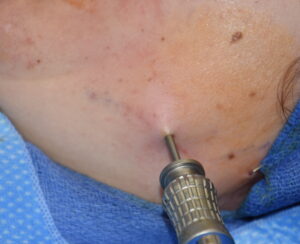Jaw angle implants have been around for over twenty-five years but were very infrequently used. They have had a more recent resurgence of aesthetic relevance due to the contemporary emphasis for a more visible and defined jawline, improved jaw angle implant styles and the widespread use of injectable augmentation strategies. (synthetic fillers and fat)
Jaw angle implants have traditionally been associated with men and the desire for a strong jawline. While this still remains true an improved jawline can be an equal female desire as well. No longer is a good jawline an exclusive male aesthetic desire..

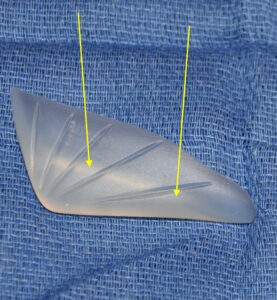
Surgical Technique
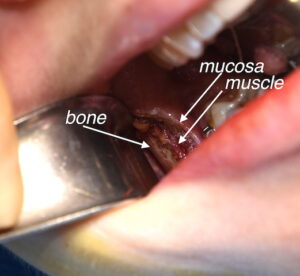
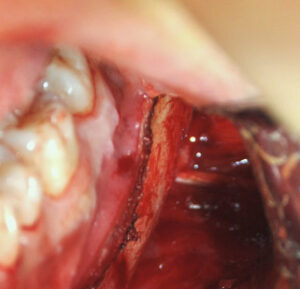
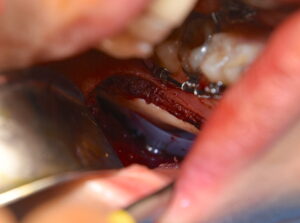
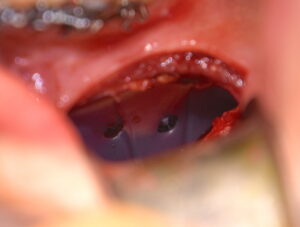
After antibiotic irrigation a two layer closure is done of both muscle and mucosa with 3-0 chromic running suture. A competent two layer closure is important for a watertight seal of thick tissue over the implant.
Jaw angle implants of any shape or size are the most challenging of all standard facial implants for placement due to the more remote posterior intraoral approach, lack of visibility of the working end of the implant and the need for screw fixation. This is very different from the anterior chin implant which poses none of these surgical challenges. However it is a jaw implant procedure that can be successfully performed by following these learned techniques.
Dr. Barry Eppley
Indianapolis, Indiana

